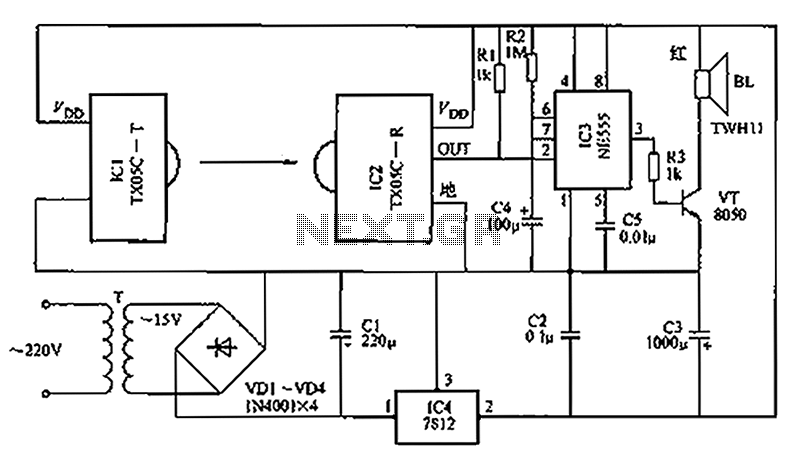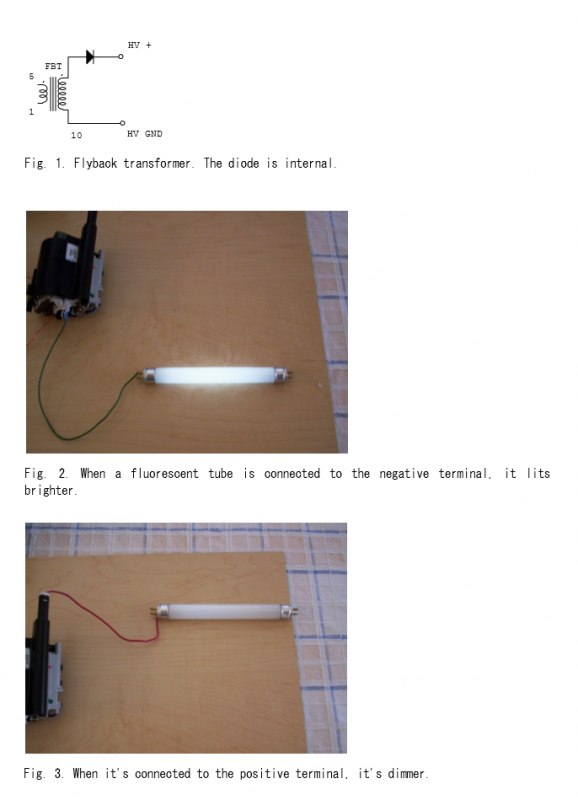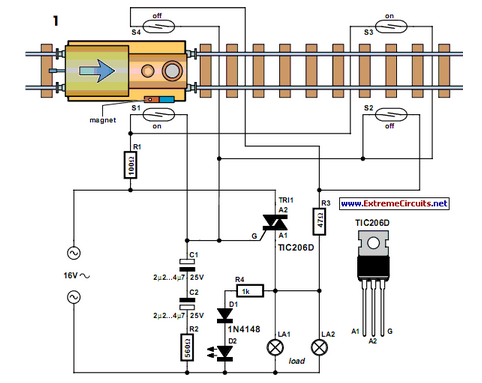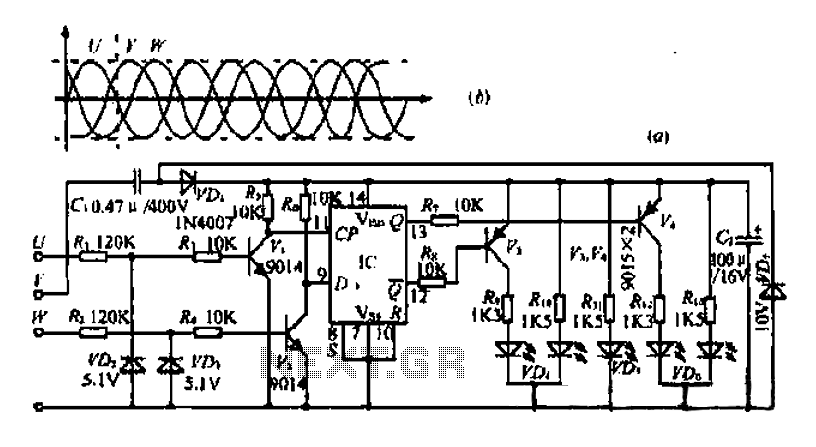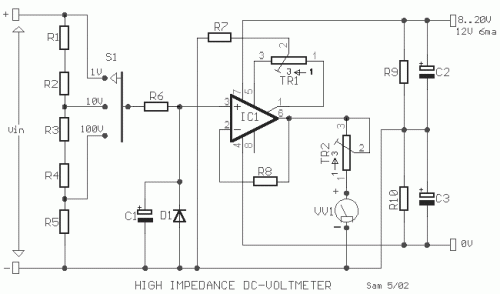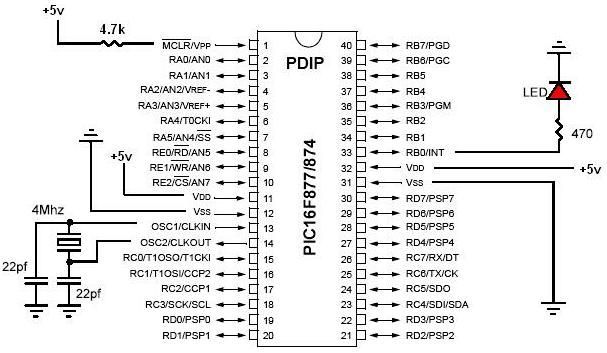
Binary Phase Shift Keying (BPSK) modulation using CD4016 with Simulated output waveform

In a binary phase shift keying (BPSK) modulation scheme, the phase of a carrier signal is altered according to digital pulse signals. The BPSK modulator functions as a phase modulator, where the transmitted signal is a sinusoid with a fixed amplitude. The phase remains constant when the data is at one level, and it shifts by 180 degrees when the data is at the other level. The binary phase shift keying method finds a variety of applications in digital communication systems, including the wireless LAN standard IEEE 802.11, digital modems, and wireless telephone networks. Differential phase shift keying (DPSK) is another type of phase shift keying technique that relies on the differences between successive phases. DPSK is notably easier to implement than traditional PSK, as it does not require the demodulator to maintain a copy of the reference signal to ascertain the precise phase of the received signal, making it a non-coherent scheme. The practical circuit for BPSK is constructed using a CD4016 and a 741 operational amplifier.
The BPSK modulation technique is characterized by its robustness against noise and its efficiency in utilizing bandwidth. The core principle involves mapping binary data to two distinct phases of a carrier wave, which can be represented mathematically as:
- Phase 0 for binary '1'
- Phase π (or 180 degrees) for binary '0'
This phase modulation allows for the transmission of binary data over various communication channels with minimal error rates. The BPSK modulator circuit typically incorporates a phase modulator, which can be realized using components such as the CD4016 quad bilateral switch and the 741 operational amplifier. The CD4016 is utilized for its ability to switch the input signal phase, while the 741 op-amp can amplify the signal to ensure adequate transmission power.
In the practical implementation of a BPSK modulator, the digital input signal is fed into the CD4016, which alters the phase of the carrier signal based on the state of the input data. The output from the CD4016 then passes through the 741 op-amp, where it is amplified to the desired output level. This configuration ensures that the transmitted signal maintains a constant amplitude while effectively encoding the binary information through phase shifts.
In comparison, the DPSK technique enhances the BPSK by encoding the data based on the difference between the current and previous bits, rather than absolute phase positions. This method simplifies the demodulation process, as it eliminates the need for a coherent reference signal, thereby reducing system complexity and cost.
Overall, BPSK and DPSK are crucial techniques in modern digital communication systems, providing reliable methods for transmitting data over various media, including wireless and wired channels. The choice between these techniques often depends on the specific requirements of the communication system, such as bandwidth efficiency, implementation complexity, and robustness against noise.In binary phase shift keying (BPSK) modulation scheme, the phase of a carrier is changed in accordance with the digital pulse signals. BPSK modulator is basically a phase modulator. Here the transmitted signal is a sinusoid of fixed amplitude. It has one fixed phase when the data is at one level and when the data is at the other level, phase is sh
ifted by 180 degree. Binary phase shift keying method has variety of applications in digital communications systems such as the wireless LAN standard, IEEE 802. 11, digital modems, wireless telephone networks etc. Differential phase shift keying (DPSK) is an other type of phase shift keying technique which depends on the difference between successive phases.
DPSK is significantly simpler to implement than ordinary PSK, since there is no need for the demodulator to have a copy of the reference signal to determine the exact phase of the received signal (it is a non coherent scheme). Here is the practical circuit of BPSK, it is build around CD4016 and 741 Op amp. Also read: Binary Amplitude Shift Keying(BASK) 🔗 External reference
The BPSK modulation technique is characterized by its robustness against noise and its efficiency in utilizing bandwidth. The core principle involves mapping binary data to two distinct phases of a carrier wave, which can be represented mathematically as:
- Phase 0 for binary '1'
- Phase π (or 180 degrees) for binary '0'
This phase modulation allows for the transmission of binary data over various communication channels with minimal error rates. The BPSK modulator circuit typically incorporates a phase modulator, which can be realized using components such as the CD4016 quad bilateral switch and the 741 operational amplifier. The CD4016 is utilized for its ability to switch the input signal phase, while the 741 op-amp can amplify the signal to ensure adequate transmission power.
In the practical implementation of a BPSK modulator, the digital input signal is fed into the CD4016, which alters the phase of the carrier signal based on the state of the input data. The output from the CD4016 then passes through the 741 op-amp, where it is amplified to the desired output level. This configuration ensures that the transmitted signal maintains a constant amplitude while effectively encoding the binary information through phase shifts.
In comparison, the DPSK technique enhances the BPSK by encoding the data based on the difference between the current and previous bits, rather than absolute phase positions. This method simplifies the demodulation process, as it eliminates the need for a coherent reference signal, thereby reducing system complexity and cost.
Overall, BPSK and DPSK are crucial techniques in modern digital communication systems, providing reliable methods for transmitting data over various media, including wireless and wired channels. The choice between these techniques often depends on the specific requirements of the communication system, such as bandwidth efficiency, implementation complexity, and robustness against noise.In binary phase shift keying (BPSK) modulation scheme, the phase of a carrier is changed in accordance with the digital pulse signals. BPSK modulator is basically a phase modulator. Here the transmitted signal is a sinusoid of fixed amplitude. It has one fixed phase when the data is at one level and when the data is at the other level, phase is sh
ifted by 180 degree. Binary phase shift keying method has variety of applications in digital communications systems such as the wireless LAN standard, IEEE 802. 11, digital modems, wireless telephone networks etc. Differential phase shift keying (DPSK) is an other type of phase shift keying technique which depends on the difference between successive phases.
DPSK is significantly simpler to implement than ordinary PSK, since there is no need for the demodulator to have a copy of the reference signal to determine the exact phase of the received signal (it is a non coherent scheme). Here is the practical circuit of BPSK, it is build around CD4016 and 741 Op amp. Also read: Binary Amplitude Shift Keying(BASK) 🔗 External reference
